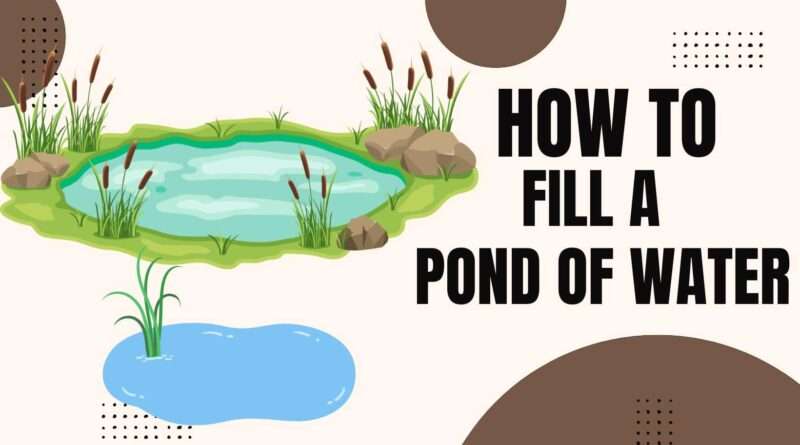How to Fill a Pond with Water | A Complete Guide
Filling a pond with water is a crucial step in creating and maintaining a healthy aquatic ecosystem.
Whether you’re building a new pond or replenishing an existing one, proper water-filling techniques are essential for the well-being of the pond’s inhabitants and overall ecosystem balance.
In this comprehensive guide, we’ll explore the various methods, considerations, and steps involved in filling a pond with water.
The time it takes to fill a pond with water varies depending on several factors, including the size of the pond, the chosen filling method, and the availability of water.
For smaller ponds, such as backyard garden ponds, filling may take a few hours to a day using a hose or pump. Larger ponds may take several days or weeks to fill, especially if relying on natural rainfall or water delivery services.
It’s important to be patient and monitor the filling process regularly to ensure the pond reaches its desired water level without overfilling or causing any disruptions to the ecosystem.
How to Fill a Pond with Water: A Step-by-Step Guide
1- Assess Your Water Source
Before filling your pond, it’s important to assess the quality and source of the water.
Ensure that the water is free from contaminants, pollutants, and harmful chemicals. If using tap water, consider dechlorinating it to make it safe for aquatic life.
2- Calculate Water Volume
Determine the volume of water needed to fill your pond. You can calculate this by measuring the length, width, and depth of the pond and multiplying these dimensions together.
Knowing the water volume will help you determine the amount of water required and prevent overfilling or underfilling the pond.
3- Choose the Filling Method
There are several methods for filling a pond with water, including:
- Natural Rainfall: Allowing natural rainfall to fill the pond is an eco-friendly option, but it may take time and depend on weather conditions.
- Hose or Pump: Using a hose or pump connected to a water source allows for controlled filling and precise water level management.
- Water Delivery Service: If you have a large pond or limited access to water, hiring a water delivery service can provide a convenient and efficient solution.
5- Monitor Water Quality
Throughout the filling process, monitor the water quality regularly.
Test for pH levels, ammonia, nitrite, and nitrate levels to ensure optimal water conditions for aquatic life. Adjustments may be necessary to maintain a healthy balance.
6- Add Beneficial Bacteria
Introduce beneficial bacteria to the pond once it’s filled with water.
Beneficial bacteria help establish and maintain a balanced ecosystem by breaking down organic waste, reducing algae growth, and improving water clarity.
7- Consider Aquatic Plants
After filling the pond, consider adding aquatic plants to enhance the ecosystem. Plants not only provide natural filtration and oxygenation but also offer habitat and food for fish and other aquatic organisms.
8- Maintain Water Level
Regularly monitor and maintain the water level in the pond to prevent fluctuations that can stress aquatic life. Supplement water loss due to evaporation or seepage as needed to keep the pond at the desired level.
Bottom Line
Filling a pond with water is a crucial step in creating a thriving aquatic habitat.
By following the steps outlined in this guide and considering factors such as water quality, filling method, and ecosystem balance, you can ensure the health and longevity of your pond and its inhabitants.




